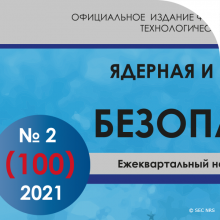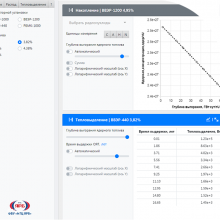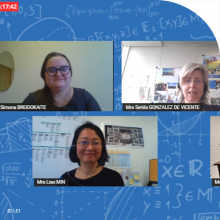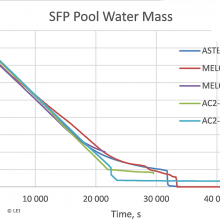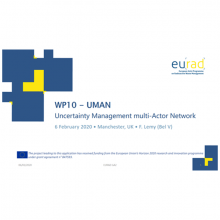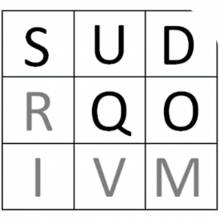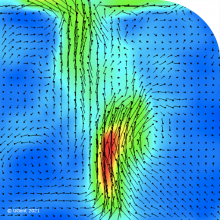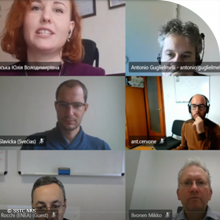News from ETSON and its members*
Rostechnadzor and the Egyptian Nuclear and Radiological Regulatory Authority (ENRRA) held a coordination meeting via videoconference on August 11, 2021.
Issue No.2 of 2021 of the "Nuclear and Radiation Safety" Periodical has come out to become the one hundredth jubilee issue since the year of foundation 1998.
The Computer Code "Calculator of Radiation and Thermophysical Characteristics of Spent Nuclear Fuel (v2.0)" was introduced into the Registry of Computer Codes under the registry No. 2021617328 dated of 13.05.2021.
Women in Fusion Side Event, was held on Wednesday 12 May during the IAEA FEC2020 virtual conference. A group of women panellists, ranging from the highly experienced to newly coined PhDs, discussed the challenges of having a successful career in nuclear physics and nuclear engineering, a mainly male-dominated field.
To assist the State Nuclear Regulatory Inspectorate of Ukraine (SNRIU) in preparation of means for Severe Accident Management Guidelines (SAMG) validation the project financed by the European Commission through the Instrument for Nuclear Safety Cooperation (INSC) Action Programme 2015 has been performed in 2017 – 2021 by an international project team led by LEI. The main goal was the development and validation of VVER-1000 models for Ukrainian NPP using MELCOR code by Ukrainian technical support organisation.
Two research topics for PhD related to spent nuclear fuel management were announced in 2021. Collaborative doctoral partnership is developed among Kaunas University of Technology, Lithuanian Energy Institute and the Joint Research Centre of the European Commission. Within the frame of such collaboration, the researchers of LEI, JRC center in Karlsruhe (Germany) and Institute for Transuranium Elements are performing in cooperation an integral analysis of the process inside the fuel rods during accidents.
The main objectives of the Uncertainty Management multi-Actor Network (UMAN) are to provide an opportunity to different actors of EU Member States involved in radioactive waste management programmes to share their experiences and views on uncertainty management and to identify emerging needs that could be addressed in subsequent waves of the European Joint Programme on Radioactive Waste Management (EURAD).
For many years, even decades, there have been endless discussions on what values to use when performing clearance based on surface specific measurements. The definition of contamination in the Transport Regulation by IAEA and an old study by Fairbairn, gave rise to the numbers 0.04 Bq/cm2 for radiotoxic alpha-emitters and 0.4 Bq/cm2 for beta/gamma emitters. These values are widely used, but also often contested and challenged. Only a thorough, comprehensive study on the derivation of nuclide specific surface clearance levels can give a founded answer to the raised issues.
Historically, the first fire protection regulations to be implemented could be described as prescriptive (or deterministic), where the performance requirements of fire protection equipment are fixed. An example of such requirement is the need to segregate Structures, Systems & Components (SSCs) important for safety with fire-rated barriers ensuring standard resistance to fire propagation between compartments (e.g. for 3 hours according to U.S. NRC regulations). Such ratings are based on standardized testing procedures (ASTM, NFPA, EN...) performed under defined conditions (like the ISO 834 time-temperature curve).
The consequences of the radiological and nuclear emergencies may vary from an overexposure of a single person to a transboundary catastrophe with multiple victims and massive radiation contamination. In light of the effort and resources potentially involved in the mitigation, assessment of the radiological consequences during an emergency is a vital stage in the planning and response.
Pagination
Stay informed - subscribe to our newsletter.
Copyright · All rights reserved












